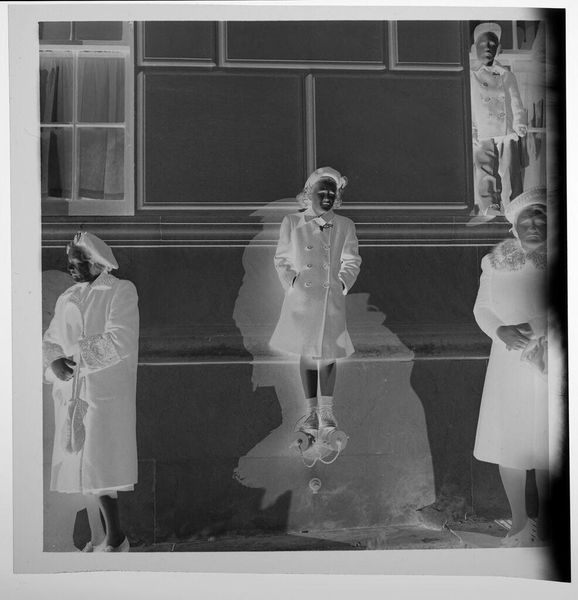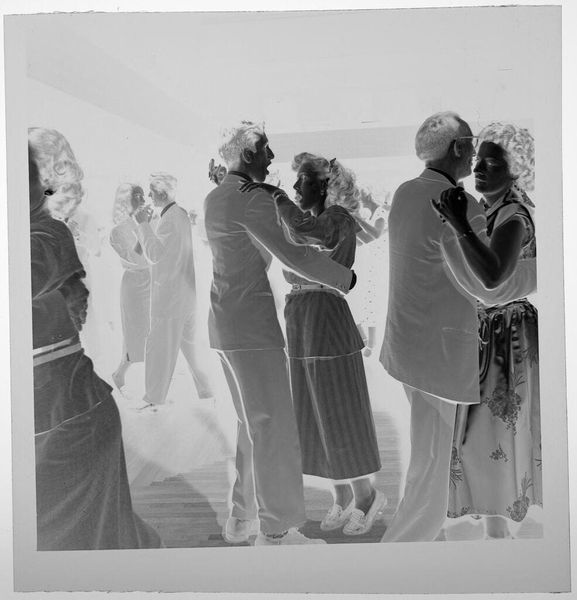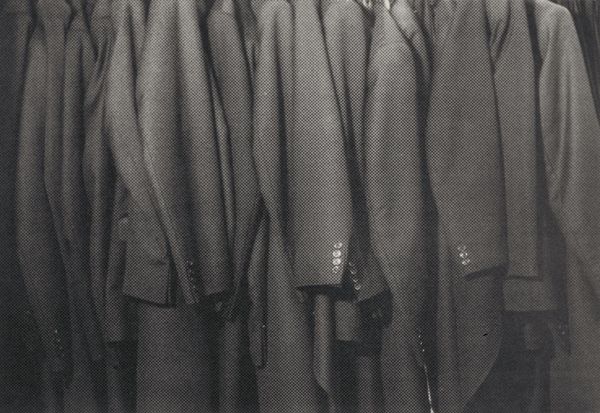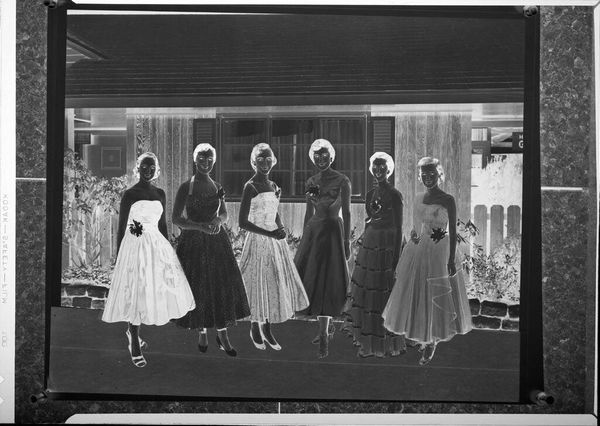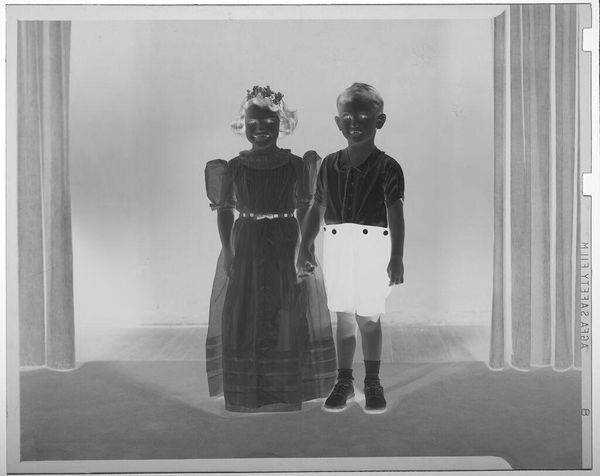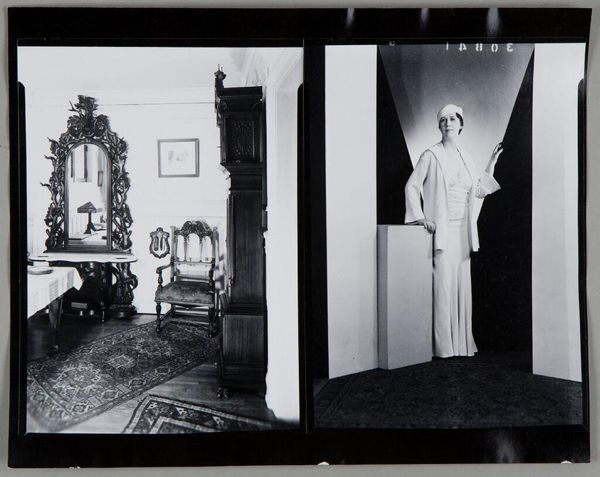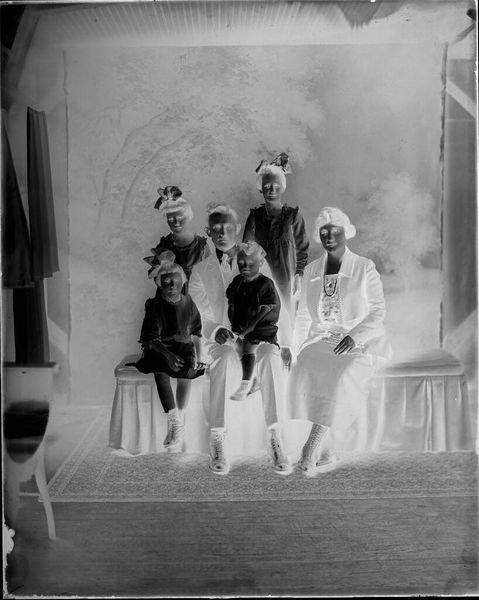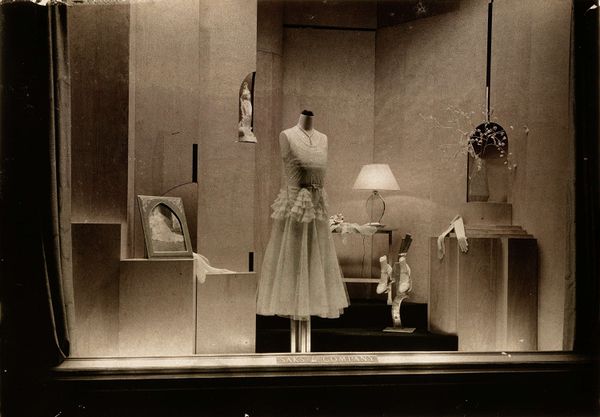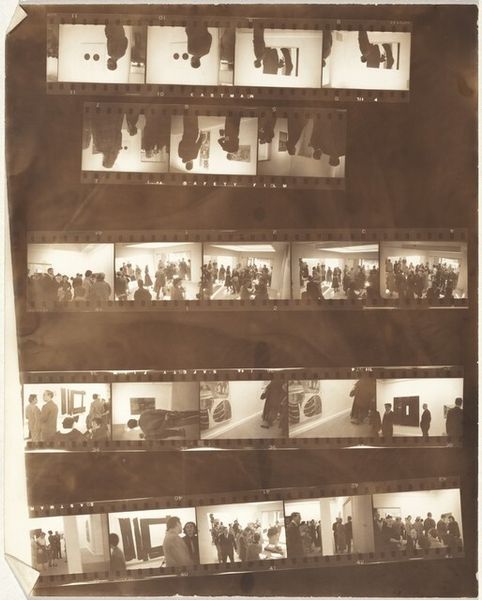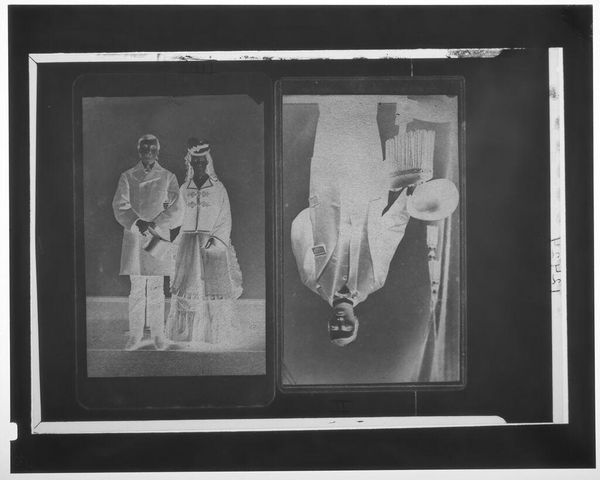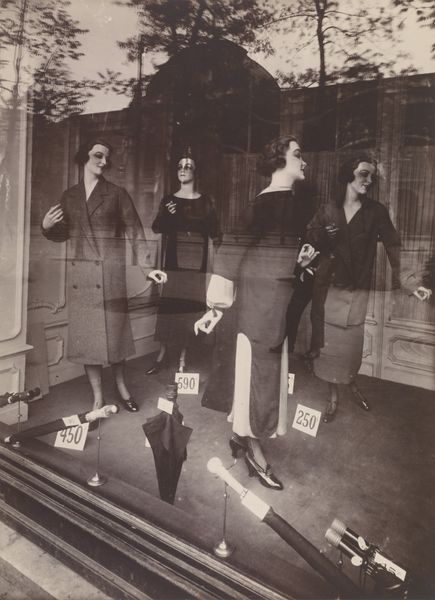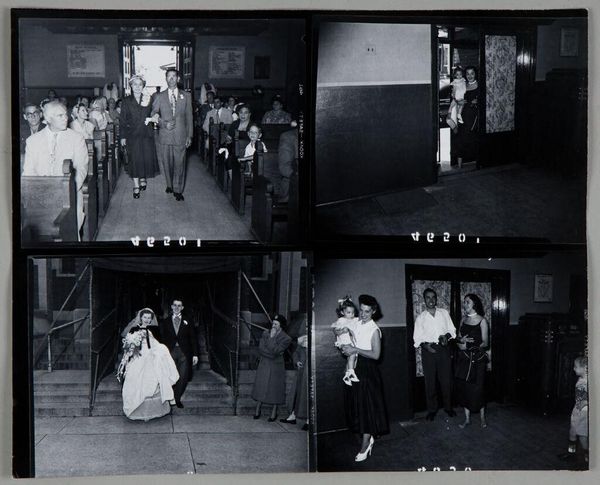
photography, gelatin-silver-print
#
portrait
#
film photography
#
conceptual-art
#
appropriation
#
archive photography
#
photography
#
gelatin-silver-print
#
monochrome photography
#
monochrome
Dimensions: image: 12.2 x 17.1 cm (4 13/16 x 6 3/4 in.) mount: 38.2 x 50.8 x 0.3 cm (15 1/16 x 20 x 1/8 in.)
Copyright: National Gallery of Art: CC0 1.0
Curator: Here we have Judith Shea’s “Queen/King,” a gelatin silver print from 1976. It’s quite a striking image, isn’t it? Editor: Yes, my first thought is of how unsettling this picture feels. It's monochromatic and ghostly, almost like a recovered artifact. Are those… kids? Curator: Indeed. Shea photographed children positioned in front of clothing patterns—robes, to be exact, each suspended like vestments. Note the deliberate mirroring. Editor: The material quality—those slightly rumpled patterns and their suggestive folds—speaks volumes about both potential and restriction. It's fabric, so easily shaped, yet pre-determined by pattern. The labour it takes to even imagine wearing the robes. Curator: Exactly. Shea's work often played with the dynamics of power and representation. “Queen/King” uses childhood and garment archetypes to subtly dissect societal roles. She created this work when there was active discussion in second wave feminism about the need to liberate women from the societal 'clothing' of what they should be. Editor: Those paper crowns on the children too… What kind of material are they made of? They appear heavy on top of their heads, maybe implying forced nobility. The image suggests a kind of staged theatre, or is the whole photo maybe itself lifted from archives? It fits somewhere between photography and costume design. Curator: It does borrow elements from both! Conceptual art in that time used archives often as part of an appropriated process. The staging draws attention to how we learn to perform within institutional frameworks, and how materials construct the narratives around us. Editor: I see that now – it is less a family photograph and more a document interrogating social structure. The garments could almost be prototypes on display… it even creates the scene like it is within the backdrop of a gallery. Curator: Yes, exactly! This photograph, its grainy texture and layered composition, is a thoughtful examination of assigned identities. We see it as just a ghost of an image but for all it hides, it tells us so much about society at the time. Editor: It leaves you pondering the limitations placed upon them, quite literally hanging above their heads. A provocative capture indeed.
Comments
No comments
Be the first to comment and join the conversation on the ultimate creative platform.
